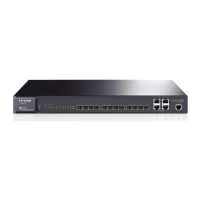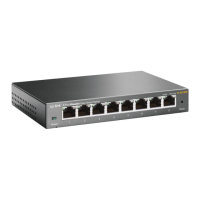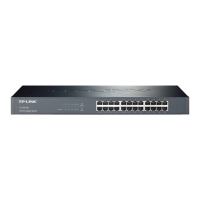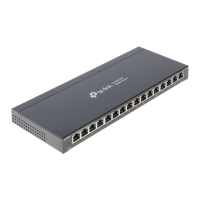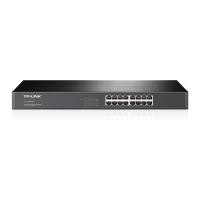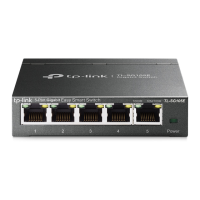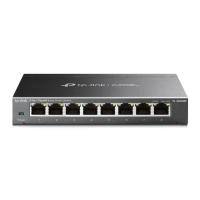Description:
Give a description to the port for identification.
Status: Allows you to Enable/Disable the port. When Enable is
selected, the port can forward the packets normally.
Speed and Duplex: Select the Speed and Duplex mode for the port. The device
connected to the switch should be in the same Speed and
Duplex mode with the switch. When “Auto” is selected, the
Speed and Duplex mode will be determined by
auto-negotiation.
Flow Control: Allows you to Enable/Disable the Flow Control feature. When
Flow Control is enabled, the switch can synchronize the speed
with its peer to avoid the packet loss caused by congestion.
LAG: Displays the LAG number which the port belongs to.
Note:
1. The switch cannot be managed through the disabled port. Please enable the port which is
used to manage the switch.
2. The parameters of the port members in a LAG should be set as the same.
3. For TL-SG5412F, 9 to 12 SFP slots and 9T-12T RJ45 ports are Combo ports, which means
that they cannot be configured at the same time. Users can choose one to use depending on
the actual network requirements but not simultaneously. When one port is working, the other
is disabled.
5.1.2 Port Mirror
Port Mirror, the packets obtaining technology, functions to forward copies of packets from
one/multiple ports (mirrored port) to a specific port (mirroring port). Usually, the mirroring port is
connected to a data diagnose device, which is used to analyze the mirrored packets for monitoring
and troubleshooting the network.
Choose the menu Switching→Port→Port Mirror to load the following page.
Figure 5-2 Mirroring Port
31
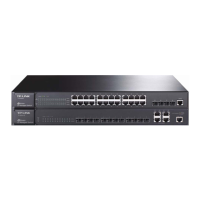
